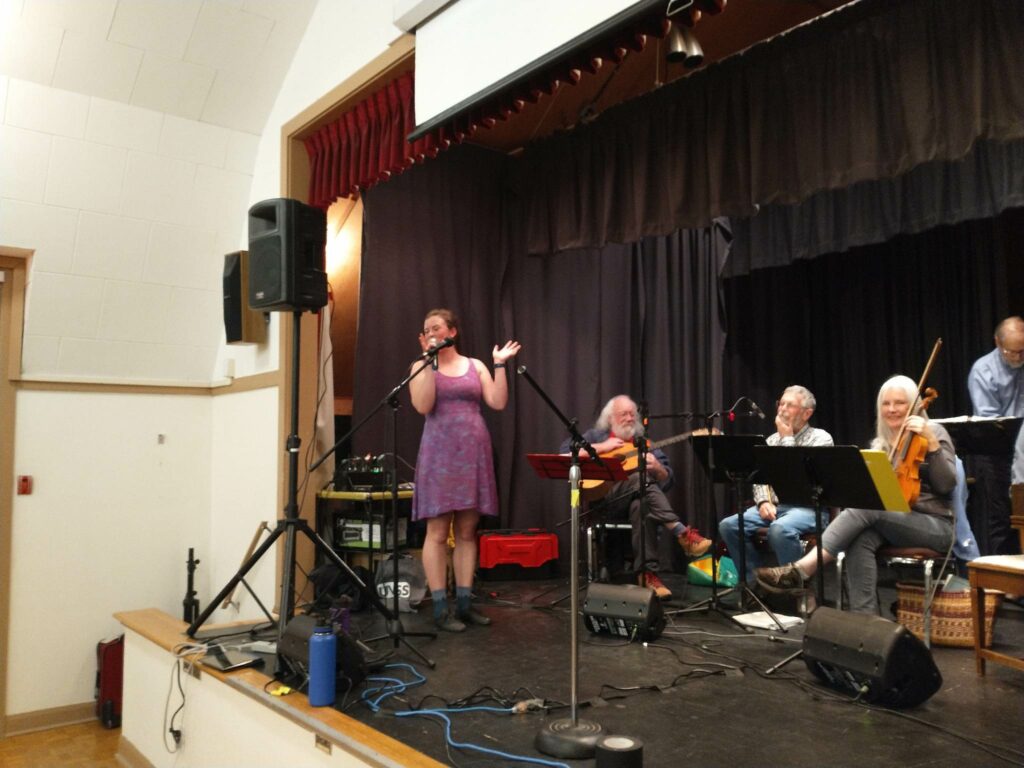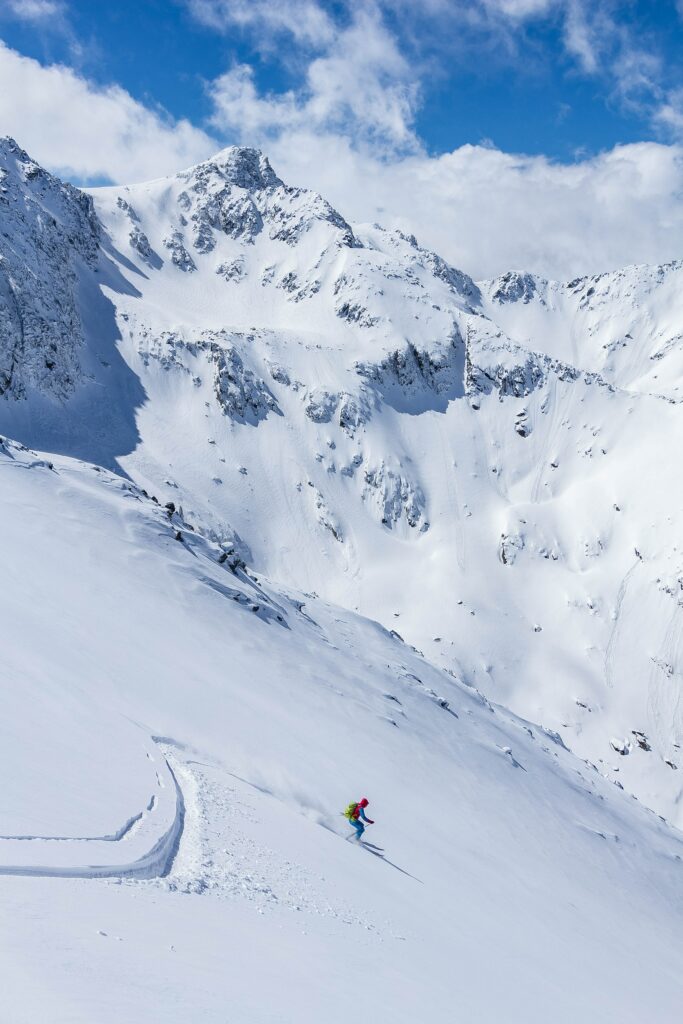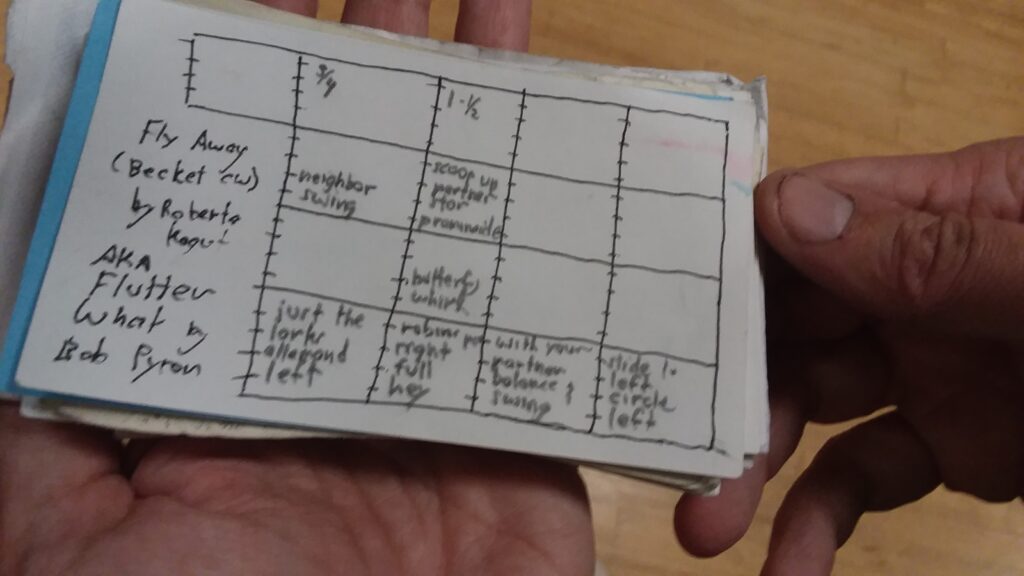8 months ago, I called my first set at Saint Matthias Hall. It did not go well. Anne, my mentor had to come onstage with me and help me start the dance, and after the dance I cried on the drive home, thinking I had messed up my only chance.
Last weekend, I called a half evening at Saint Matthias Hall. It wasn’t perfect, but it was entirely functional.


My Dances
I started by calling the beginner lesson, teaching basic contra moves using Larks and Robins terminology. As part of the lesson, I called Essex Reel by Tony Parkes. That was an easy and familiar (if not very interesting) dance.
Our first full dance of the evening was Orono Special by Tony Parkes. It was a little too similar to Essex for my taste. Next time, I will try something a little more dynamic as a first dance.
Then, we moved on to Simplicity Swing by Becky Hill, Hello Nurse by Maia McCormic, and Butter by Gene Hubert. These dances all emphasized chains, and I used them to introduce my dancers to swings, chains, and heys. Butter was a new dance for me, and it fell apart a bit because the band played a 3 part tune rather than a 2 part tune.
We ended the half of the dance with With Thanks to the Dean by Steve Zakon-Anderson. This is a dance that I particularly like because it is an easy double progression by a caller I really admire.
I also planned to call an adapted version of Petronella, but I didn’t end up having time for 6 dances.
Feedback
I was approached by quite a few dancers afterward, who told me that they appreciated my dance choice. I specifically got good feedback on my last few dances.
Talking to the Odd Hack Band, I learned that my cues were often late for ending tunes, something I am hoping to work on in the future.
Reflections on My Calling Journey
I have grown so much throughout my inquiry process, but I am still right at the beginning of my calling career.
When I started this inquiry, I wasn’t sure whether calling was something that would “stick” for me. I wondered if it might just be a phase. Now, I see how much I can give back to the contra community by being someone who knows how to call and who can step in and call a dance.
I have also seen how much power callers have to make positive change in contra communities. Callers can create dances wherever they are, a fact that gives me so much joy. I wish I had learned to call earlier, so I could have brought contra to all the places I have been.
Moving Forward
This summer, I’m working to organize a contra dance at the First Unitarian Church of Victoria so that the Victoria contra community has contra in the summer.
I am also traveling to New England in June and calling three dances with my best friend, ex-roommate, and the woman who taught me to dance.
Find a partner for another dance and take hands four from the top.





